The Spire
The commission for The Spire was awarded through an open international competition. The site, located at the junction of OConnell Street and Henry Street, was previously occupied by Nelsons Pillar which was destroyed by terrorists in 1966.
The new monument and re-landscaping of OConnell Street is seen as the flagship development in the improvement of the centre of Irelands capital. The Spire was inspired by the everchanging light of the skies over Ireland. The form continues the tradition of standing stones and obelisks. The Spire was designed to embody an optimistic and far reaching spirit of construction in contemporary Ireland. A circular cone 120 metres high and 3 metres in diameter at the base, the monument rises above OConnell Street, breaking above the roof line with as slender and elegant a movement as is technically possible.
The Spire was prefabricated from rolled stainless steel plate: 35mm thick at the base, 20mm in the middle, 10mm at the top. The Spire sways gently in direct response to the wind. During the day the monuments shot-peened surface softly reflects the light of Irelands sky. A mirror polished pattern on the lowest 10 metres was derived from studies of the rock strata beneath the site overlaid with the double helix of DNA. This offers reflections of the streetscape and visual stimulation at ground level. At dusk, the base is gently lit and the top twelve metres illuminated from within to provide a beacon in the night sky over Dublin. It has its roots in the ground and its light in the sky. The slender vertical emphasis of the design was an essential characteristic required to reintroduce a counterpoint to the prevailing horizontality of OConnell Streets buildings. It was important to frame the monument with the east-west street façades and to avoid visually filling the streetscape.
This demanded a very slender profile. A width of 3 metres was considered the maximum and this led to a proportion of base width to height that achieved elegance. The 1 in 40 ratio was considered challenging technically, but visually ideal . The 7m outer diameter base, flush with the surrounding paving, was cast in bronze with a varying depth spiral profile that follows the original theme of a spire the past expanding through time into the future. The Spire itself slips past without touching the base.
According to the perspective of the individual citizen, The Spire can carry a variety of meanings or associations. It can be read as an allusion to an underground church, the spire transformed at night into a votive candle of an urban dimension, or, as the competition jury stated, be seen as a primary element, a freed point in the urban dynamic (Rossi). The multivalent nature of The Spires imagery allows it to appeal to a variety of values, while being resistant to the exclusive incorporation into a single value system. This non-prescriptive valency was regarded as important in the inclusive multicultural modern Ireland.

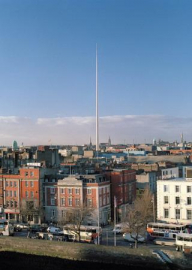
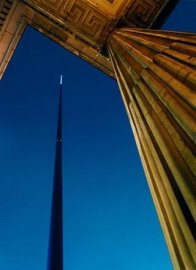
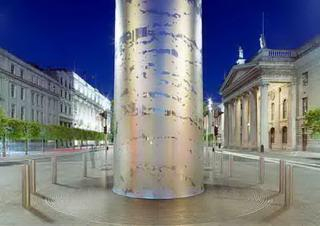


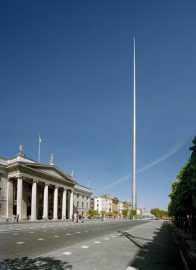
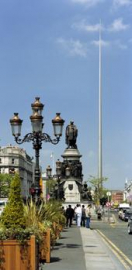
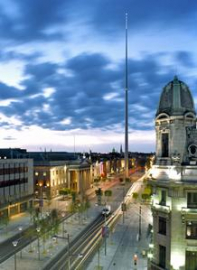
 copy.jpg)
.jpg)
.jpg)